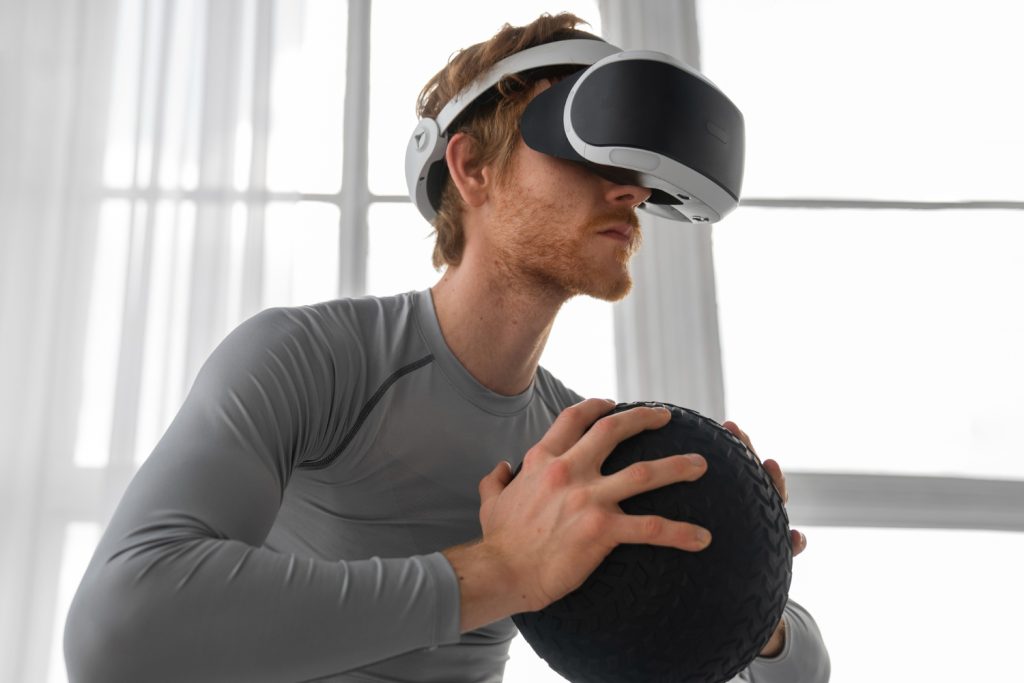When injury, illness, or age limit our ability to move freely, rehabilitation becomes crucial for regaining function and reclaiming an active life. Thankfully, the field of movement therapy is undergoing a dynamic transformation, fueled by cutting-edge technology and scientific breakthroughs. Let’s explore how this exciting evolution is redefining rehabilitation and empowering individuals to reach their full potential.
By: Estefany Vasquez
How Technology is Transforming Movement Therapy
Traditional movement therapy relies heavily on the expertise of therapists, utilizing established exercises and techniques. While these methods remain valuable, technology is introducing a new dimension to rehabilitation, offering:
Enhanced Engagement
Virtual reality (VR) applications are making therapy sessions more immersive and engaging. Imagine practicing walking through a virtual park or mastering balance exercises in a simulated environment. VR can not only improve motivation but also provide a safe space to practice movements that might be challenging in the real world.
Precision and Feedback
Robotics-assisted therapy utilizes robotic devices to guide and support patients through specific movements. These devices offer precise feedback on range of motion, strength, and coordination, allowing therapists to tailor exercises for optimal results.
Accessibility and Convenience
Telemedicine advancements are revolutionizing accessibility. Patients can now receive therapy sessions remotely, eliminating geographical barriers and creating more flexible treatment schedules. This is particularly beneficial for those with limited mobility or living in remote areas.

The Future is Now: Emerging Technologies in Movement Therapy
The future of movement therapy is brimming with potential thanks to ongoing research and development. Here are some exciting possibilities on the horizon:
- Personalized Recovery Plans: Artificial intelligence (AI) and big data can revolutionize personalized care. By analyzing movement patterns and patient data, AI can create individualized treatment programs that maximize progress and efficiency.
- Biofeedback and Wearable Tech: Real-time biofeedback from wearable technology like smartwatches and sensors can provide continuous monitoring of vital signs and movement patterns. This allows therapists to adjust exercises and track progress more effectively.
- Neurorehabilitation Advancements: VR and brain-computer interface (BCI) technology are opening doors for neurorehabilitation. VR can simulate scenarios that stimulate brain activity, while BCI allows patients to interact with virtual environments using their thoughts, potentially aiding recovery from neurological conditions.
Getting Back to Your Best Self with Movement Therapy
Quantum Integrative Care recognizes the importance of a holistic approach to healthcare, and movement therapy plays a vital role in that philosophy. By integrating cutting-edge technology with established therapeutic practices, we can offer a comprehensive and effective rehabilitation experience tailored to your individual needs.
Whether you’re recovering from an injury, managing a chronic condition, or simply seeking to improve your overall mobility, movement therapy can be a powerful tool for regaining strength, flexibility, and confidence. As technology continues to revolutionize this field, Quantum Integrative Care is committed to staying at the forefront, providing you with the most advanced and effective rehabilitation solutions available.
Ready to take your first step towards a more active and fulfilling life? Contact Quantum Integrative Care today to learn more about our movement therapy programs.
Instagram: @quantumchirofl
Facebook: Quantum Integrative Care
LinkedIn: Quantum Integrative Care
